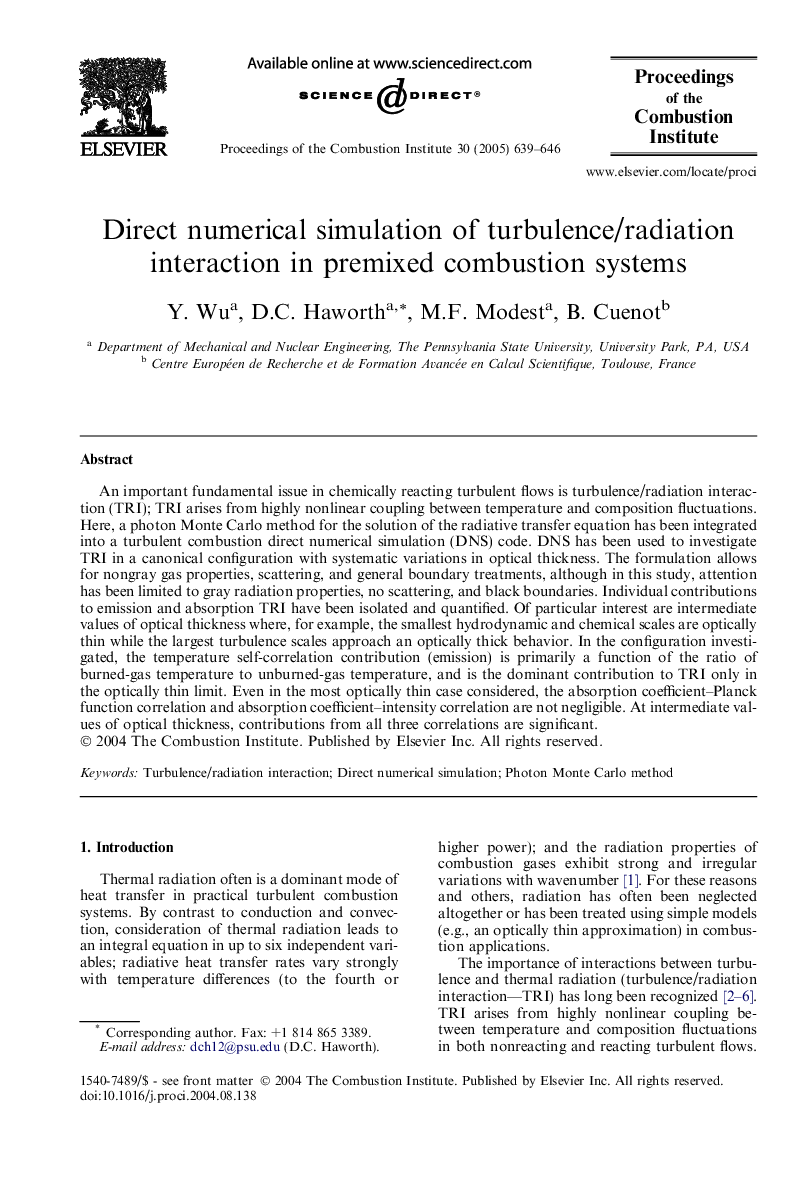| Article ID | Journal | Published Year | Pages | File Type |
|---|---|---|---|---|
| 9637386 | Proceedings of the Combustion Institute | 2005 | 8 Pages |
Abstract
An important fundamental issue in chemically reacting turbulent flows is turbulence/radiation interaction (TRI); TRI arises from highly nonlinear coupling between temperature and composition fluctuations. Here, a photon Monte Carlo method for the solution of the radiative transfer equation has been integrated into a turbulent combustion direct numerical simulation (DNS) code. DNS has been used to investigate TRI in a canonical configuration with systematic variations in optical thickness. The formulation allows for nongray gas properties, scattering, and general boundary treatments, although in this study, attention has been limited to gray radiation properties, no scattering, and black boundaries. Individual contributions to emission and absorption TRI have been isolated and quantified. Of particular interest are intermediate values of optical thickness where, for example, the smallest hydrodynamic and chemical scales are optically thin while the largest turbulence scales approach an optically thick behavior. In the configuration investigated, the temperature self-correlation contribution (emission) is primarily a function of the ratio of burned-gas temperature to unburned-gas temperature, and is the dominant contribution to TRI only in the optically thin limit. Even in the most optically thin case considered, the absorption coefficient-Planck function correlation and absorption coefficient-intensity correlation are not negligible. At intermediate values of optical thickness, contributions from all three correlations are significant.
Keywords
Related Topics
Physical Sciences and Engineering
Chemical Engineering
Chemical Engineering (General)
Authors
Y. Wu, D.C. Haworth, M.F. Modest, B. Cuenot,
